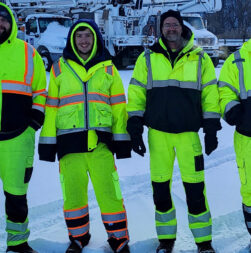U.S. Roads During COVID-19 Crisis Were Empty but not Safe
Less traffic isn’t more safe. During the COVID-19 crisis, the internet was flooded with images of empty highways and roads. From London to Chicago to Los Angeles, with almost empty roads in every city and state, many people assumed that this crisis would result in fewer accidents and road fatalities. However, despite an unprecedented reduction in traffic, many areas saw an uptick in deadly accidents on previously crowded roads.
Governors Highway Safety Association Agree
According to an April 16, 2020 report from the Governors Highway Safety Association, “In New York City, despite far fewer vehicles on the road, the city’s automated speed cameras issued 24,765 speeding tickets citywide on March 27, or nearly double the 12,672 tickets issued daily a month earlier. In Los Angeles, speeds are up by as much as 30% on some streets, prompting changes to traffic lights and pedestrian walk signals.”
California Highway Patrol Reported Bigger Crashes
California highway patrol officer Jim Bettencourt told the San Diego Union-Tribune in March 2020 that low-traffic on freeways changed driver behavior. “With no traffic, people are pushing the envelope a little more. The crashes are a little more dynamic, fewer fender-benders. Almost every one has an ambulance responding.”
Flagger Force Safety Expert Weighs In
Shawn Fahey, corporate safety manager at Flagger Force, notes, “Whenever there is a global or national situation that causes anxiety or sadness, studies show alcohol and drug usage tend to increase as well. It’s important for motorists to remember that drivers are more likely to be under the influence.”
He emphasizes that defensive driving is even more important during stressful times. Lack of sleep means that drowsiness behind the wheel is also a problem. “People may have trouble focusing, resulting in distracted driving,” says Fahey.
NHTSA Confirms Less Traffic Isn’t More Safe
While these reports may be surprising to some, dangerous behavior on light traffic roads is nothing new. Studies suggest that low-traffic roads can be more deadly than congested roadways. And these safety concerns about lightly traveled roads don’t go away once the crisis passes. The dangers of low volume roads have been studied extensively by the National Highway Safety and Traffic Association (NHTSA). They conduct annual studies that compare fatality rates in rural areas (light traffic) to urban areas (high traffic).
Center for Disease Control Provided Supporting Data
The Center for Disease Control and Prevention also conducted research in 2017 that concluded adult drivers and passengers in America’s most rural counties had motor-vehicle death rates three to 10 times higher than those in the most urban counties.
Why Isn’t Less Traffic More Safe?
What makes roads with lighter traffic more dangerous? NHTSA notes that speed is a leading risk factor. Speed limits in urban areas force drivers to slow down, giving them more time to react to risks. When speed limits skyrocket in rural areas, even small mistakes can result in death. In Wyoming, the state with the second-highest traffic fatality rate in the country, rural roads have an 80 mile per hour speed limit. At such high speeds, Wyoming residents can quickly find themselves in life-threatening circumstances.
The NHTSA study also concludes that when traffic is light, drivers tend to take fewer precautions. They are less likely to use seat belts and are more likely to ignore stop signs or traffic lights.
Fahey adds, “Good driving habits tend to break down when there’s less traffic. Drivers are inclined to operate under the assumption that, since they aren’t seeing a lot of cars, it’s okay to break the rules.”
He adds, “Our temporary traffic control crews have to avoid making assumptions. They don’t have an expectation that motorists are going to be aware of where our crew is standing or where the client is working.” Fahey concludes, “I am very proud of our team and how safely they’ve been able to operate in the months of the crisis. Changes in driving behavior make a lot of the existing safety concepts that we already have in place all the more important.”

